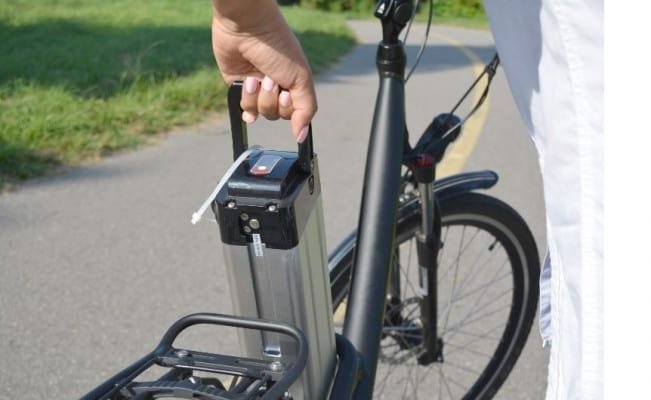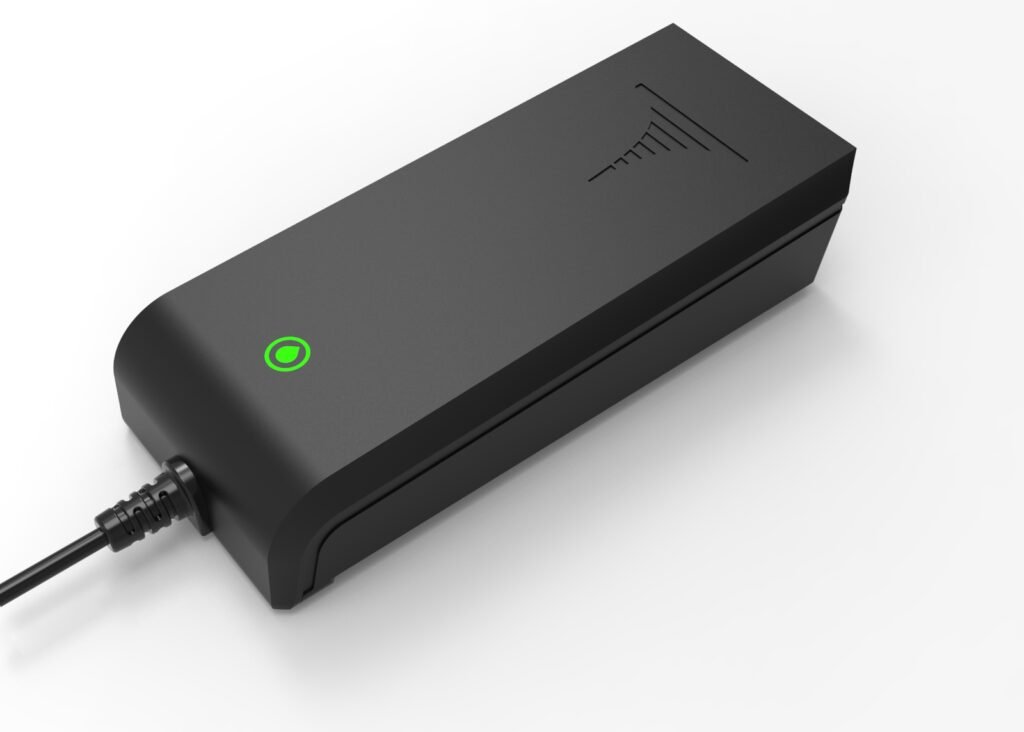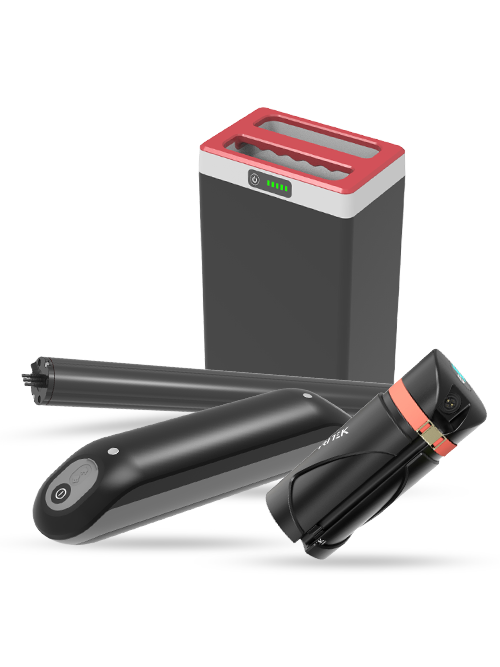With the popularity of electric bicycles around the world, it is becoming more and more important to choose the right rechargeable battery capacity.The battery pack is the heart of an electric bike and plays a crucial role in determining the range and performance of the bike. In recent years, lithium batteries have become the most popular choice for e-bike batteries due to their high energy density, light weight, and long lifespan compared to lead-acid batteries.
According to a report by market research firm Evans Data Corporation, the global e-bike market is expected to grow at a compound annual growth rate of 6.39 percent, reaching a market size of 398 million units by 2025.
Therefore, knowing how to choose the battery capacity will have a significant impact on the riding experience and range.
When choosing the right battery capacity for your electric bike, there are several factors to consider, such as your riding style, terrain, and distance of your commute. ampere-hours (Ah) and represents the amount of charge the battery can store. The higher the ampere-hour rating, the longer the range of your electric bike.
For short commutes and casual riding, a battery capacity of 5-10 Ah is sufficient. However, if you plan to use your electric bike for longer commutes or on hilly terrain, a higher-capacity battery pack with 10-20 Ah or more may be necessary to provide the necessary power and range.
It’s also important to note that different types of rechargeable batteries have different characteristics and performance. Lithium batteries are the most commonly used in electric bikes, but nickel metal hydride batteries are still used in some portable devices and electronics.
Overall, choosing the right battery capacity for your electric bike is crucial to ensure an optimal riding experience. Consider your riding style, distance, and terrain, as well as the type of rechargeable battery used in the battery pack to make an informed decision.
This article will provide you with a detailed guide to help you choose the right battery capacity for your electric bike.
If you also want to know other influence factors such as weight, voltage, Discharge rate, battery types, battery cells, we also have a comprehensive guide for each, just click the single word and get it!

What is the battery capacity?
Battery capacity refers to a battery’s ability to store electrical energy and is usually measured in ampere-hours (Ah). A 1Ah battery can provide 1 amperage for 1 hour.
Therefore, the larger the battery capacity, the more energy the battery can store and the longer the current can be supplied.
An electric bicycle is a vehicle that uses batteries as a power source. It is powered by a battery rather than a conventional oil engine. The battery converts electricity into power, which drives the electric bike. So batteries play a crucial role in electric bikes.

How battery capacity impacts the performance and range of electric bicycles
Battery capacity is very important for electric bicycles as it directly affects the range and battery life of the bike. The size of battery capacity determines the maximum distance that an e-bike can travel on a single charge. Typically, the larger the battery capacity, the longer the range of the electric bike and the longer it can be used for. This means that riders can travel longer distances and have a better riding experience without having to worry about running out of power for a long time.
In addition, the battery capacity also directly affects the shelf life of the battery. The service life of the battery refers to the length of time that the battery can work normally without significant loss of capacity. When the battery capacity decreases to a certain extent, the battery life will also decrease, which means that the battery will need to be replaced more frequently.
Choosing an appropriate battery capacity can extend the service life of the battery, reduce the frequency of battery replacement, and ultimately save costs for e-bike riders in the long run.
Unit of battery capacity and calculation formula in electric bicycles

Battery capacity is usually measured in amp-hours (Ah), which indicates how much current a battery can provide in an hour. For example, a 1Ah battery can provide one amp for one hour.
Another common unit of battery capacity is the milliampere-hour (mAh), which indicates how much current a battery can provide in an hour. For example, a 1000mAh battery can provide one amp of current for one hour.
The formula for calculating battery capacity is:
Battery capacity (Ah) = battery output current (A) x service time (h)
For example, if a battery can provide 2 amps of current for 5 hours of use, the capacity of the battery is:
Battery capacity = 2A x 5h = 10Ah

Understanding the correlation between battery capacity and the range of an electric bicycle for optimal performance
Battery capacity is closely related to the range of electric bikes.
Range refers to the distance an e-bike can travel on a single charge. Typically, the larger the battery capacity, the further an e-bike can go. This is because the larger the battery capacity, the more electricity the battery can store, providing a longer current output to drive an e-bike over a longer distance.
However, the range is also affected by other factors, such as driving style, route, slope, etc.
Therefore, these factors should also be taken into account when choosing battery capacity to achieve the best range performance.
Factors to Consider When Choosing the Right Battery Capacity for Your Electric Bicycle

The appropriate battery capacity for an e-bike depends on various factors such as the driving route, distance, speed, slope, and rider’s weight. Here are some guidelines to help you determine the most suitable battery capacity for your e-bike:
1. Determine the driving route:
The driving route affects the energy consumption of an e-bike. For example, driving on flat roads uses less electricity than driving on ramps. Therefore, the driving route is an important factor in choosing the right battery capacity.
2. Determine the driving distance:
If you frequently travel long distances, a larger battery capacity will be necessary. Otherwise, you may need to recharge your battery while on the road.
3. Determine the driving speed:
The driving speed also affects your electric bike’s energy consumption. Driving at high speeds requires more energy, and therefore more battery capacity. Driving at lower speeds requires less energy, so a smaller battery capacity can be used.
4. Determine the slope:
The slope affects the energy consumption of an e-bike. It takes more energy to climb a hill, so it requires more battery capacity. Flat road driving requires less energy, so a smaller battery capacity can be used.
Based on the above factors, you can calculate the optimal battery capacity. In general, you need to choose at least one battery capacity that can cover the distance you need to travel each day. You can also choose a larger battery capacity for emergencies, such as a sudden need to drive a longer distance.
There is also a relationship between battery capacity and battery price and weight.
Large-capacity batteries cost more and weigh more. So you need to strike a balance between price, weight, and battery capacity. Generally speaking, it is recommended to choose a high-quality large-capacity battery, which can ensure the service life and performance of the batteries.
Understanding How Battery Weight Affects Electric Bicycle Performance
Exploring the different factors that can affect battery capacity in electric bicycles

Battery capacity is a measure of how much energy a battery can store, generally expressed in units of “ampere hours (Ah).” The choice of battery capacity is the key to electric bicycles, because it directly determines the range and uses time. When selecting battery capacity, you need to consider a variety of factors, including the use demand of electric bicycles, battery price, weight, and other factors.
In addition to these factors, the choice of battery capacity will be affected by several factors. The following describes the factors that affect battery capacity.
- Battery type: Battery type is another important factor that affects battery capacity, as different types of batteries have different energy storage densities and capacities. Among the various battery types, lithium-ion batteries are the most commonly used in electric bikes due to their highest energy density, low internal resistance, and high performance. Lithium-ion batteries are also lighter, smaller, and more durable than lead-acid batteries, making them an ideal choice for electric bikes.
Compared to other types of batteries, lithium-iron batteries have the highest energy density and perform best at high temperatures. On the other hand, lithium-polymer batteries have a lower energy density but perform better at low temperatures. Overall, the choice of battery type for an electric bike should take into account the specific needs and requirements of the rider, as well as the environmental conditions in which the bike will be used.
Read more about Which battery is best for an electric bicycle

- Charging method: Different charging methods will affect the capacity and service life of the battery. Different charging methods will have an impact on the charging efficiency of the battery, which in turn will affect the battery capacity.
Common charging methods include normal charging, fast charging, constant current charging, etc. Among them, fast charging can fill the battery quickly, but it will damage the battery life.
Therefore, it is necessary to choose the appropriate charging method. Over-discharge or over-charge should be avoided when charging. Over-discharging will damage the capacity of the battery, and over-charging will shorten the battery’s service life.
Therefore, using a professional charger and charging with the charger according to the instructions can ensure the capacity and service life of the battery.
Triteks’ 3 Stage Battery Charger for Lithium Battery

- Ambient temperature: In high or low temperature environments, battery capacity will be affected, so the temperature range of the usage environment needs to be considered when selecting a battery.
In a high-temperature environment, the battery capacity will be reduced and the battery life will be shortened. In low-temperature environment, the battery capacity will be reduced, but the battery life will be increased.

Therefore, when selecting a battery, it is necessary to consider the temperature range of the battery in the use environment, and select the appropriate battery type and charging method.
To sum up, the selection of battery capacity needs to consider a variety of factors, including the use demand of electric bicycles, battery price, weight, and other factors, as well as the battery type, charging method, ambient temperature, and other factors. When selecting battery capacity, you need to choose according to your own needs and situations to achieve the best use effect.
Other considerations
In addition to battery capacity and influencing factors, battery use and maintenance are also very important, which can significantly affect battery life and performance. Before choosing a battery brand and supplier, consider the following precautions to ensure maximum battery life:
- Correct charging method

Proper charging is crucial for maintaining the performance and longevity of your e-bike battery.
To avoid damaging the battery, it’s recommended to use a professional charger designed for your specific battery chemistry and avoid overcharging or over-discharging the battery while charging. Using a charger with an automatic shut-off feature can help prevent overcharging, and monitoring the charging progress and removing the battery from the charger once it’s fully charged is also important. It’s best to keep the battery’s charge level between 20-80% for optimal performance and longevity.
By following these guidelines, you can help extend the lifespan and performance of your e-bike battery, ensuring reliable and efficient power for years to come.
Discover the Top 15 Advantages of Smart Lithium Battery Chargers for E-bikes
- Avoid over-discharge

Over-discharge is when a battery is stretched so far that it can no longer supply enough power to a device. Avoiding over-discharge can extend battery life while also reducing the risk of deterioration in battery performance. When using a battery, you should charge it as much as possible before it runs out.
- Avoid extreme temperatures

To maximize your battery’s lifespan and performance, it’s important to store and charge it at the correct temperature.
Room temperature, between 20-25°C (68-77°F), is ideal to prevent self-discharge and maintain capacity. Extreme temperatures can harm battery performance and lifespan, with high temperatures causing quicker degradation and reduced capacity, and low temperatures reducing performance. When charging, make sure the temperature is within the recommended range for your battery. Store your battery in a cool, dry place away from direct sunlight or heat sources, and consider using a temperature-controlled storage unit or charging device.
Wanna know how to Winter-Proofing Your Electric Bike and Safeguarding Against E-bike’s Battery Overheating Risks?
- Charge regularly

Proper maintenance of an e-bike battery is essential to ensure its longevity and performance. Even if you are not using your e-bike frequently, it is still recommended to recharge the battery regularly. This is because e-bike batteries, like other rechargeable batteries, experience self-discharge over time. Self-discharge is a natural process that occurs when the battery is not in use and can lead to a loss of capacity.
Regular recharging of the battery can help prevent self-discharge and maintain the battery’s capacity. Most e-bike batteries have a recommended recharge cycle of at least once a month, but this can vary depending on the battery chemistry and manufacturer’s instructions. It’s important to follow the recommended charging intervals to avoid damaging the battery or reducing its lifespan.
- Keep it clean and dry

Moisture and corrosive substances can damage the battery casing and internal components, so it’s important to avoid exposing the battery to them.
If the battery does get wet, dry it off with a soft, dry cloth and allow it to air dry before using or charging it. Keep the battery clean and free from dirt and debris, but avoid using harsh chemicals or abrasive cleaners, as they can cause damage to the battery casing or internal components.
By following these simple guidelines, you can help ensure that your e-bike battery delivers reliable and efficient power for years to come.
- Select the appropriate battery brand and supplier

When selecting battery brands and suppliers, factors such as brand reputation, supplier service level, and battery quality should be taken into account. Customers’ comments and feedback can be used to understand the supplier’s credibility. In addition, suppliers that can provide quality assurance and after-sales service should be selected to protect the rights and interests of customers and the quality of products.
To conclude, selecting the appropriate battery capacity is crucial, but attention to detail during battery usage and maintenance is equally important for extending the lifespan and optimizing the performance of the battery.
Read more about how to extend Lithium battery lifetime

When selecting the battery capacity of an electric bicycle, several factors need to be considered, including driving route, distance, speed, slope, budget, etc., to determine the best battery capacity. At the same time, you also need to consider the battery type, charging method, ambient temperature, and other factors to determine how to adjust the battery capacity selection based on these factors.
Battery capacity is one of the key factors of the electric bicycle range, so when choosing an electric bicycle, we must fully consider the importance of battery capacity. Finally, it is recommended that choose appropriate battery brands and suppliers according to actual needs, and pay attention to the purchase of products from formal channels, to obtain a better user experience and after-sales guarantee.
Tritek, a professional battery manufacturer located in Shenzhen, China. Our battery products cover a wide range of types and capacities to meet the needs of different customers. We can also provide personalized battery solutions according to customers’ actual needs and offer professional technical support and services to our customers.
As a battery manufacturer, we attach great importance to product quality and R&D capabilities. We have a strictly managed quality system and strong R&D capabilities, committed to producing high-quality batteries. Our batteries are integrated with intelligent BMS to ensure the safety and stability of the batteries during use, and they also have a low self-discharge rate, which means they can maintain their charge for longer periods of time when not in use.
In addition, our strong production capacity and efficient manufacturing processes allow us to deliver a large number of batteries quickly to meet our customers’ needs, with a minimal lead time. We also strive to reduce the environmental impact of our production processes and use only eco-friendly materials in our battery manufacturing.
During the sales process, we provide 0km after-sales service to ensure our customers receive timely support and maintenance during use. We also offer technical support and product training to our customers to help them maximize the performance of our batteries. We understand the importance of our customers’ satisfaction and always work to exceed their expectations with our high-quality products and exceptional service.
We believe that by choosing Tritek as your battery supplier, you will receive high-quality batteries, fast delivery, and excellent after-sales service.
Read more:



